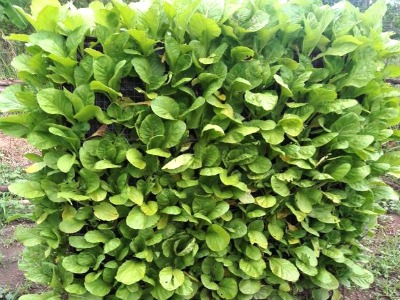Vertical gardens, also called wall gardens, tapestry walls, living walls, vegetal walls, and growing walls, have been introduced in landscape designs.
Concrete walls, including fences and the sides of buildings, are converted into living walls of vegetation in exquisite designs.
Vertical surfaces of structures that are either free-standing or part of a building can therefore be converted into an intriguing display of vegetation vertically, rather than horizontally as is practiced in the usual conventional gardens.
However, the potential of vertical gardens is not, and should not be, limited only to ornamental plants for aesthetic effects.
Vertical gardening is a promising technology that can be exploited within the urban areas for the increased production of food crops and other important crops, including culinary herbs and medicinal crops.
Such crops can be grown for home use and supplemental profit, as well as incorporated into the landscaping plan.
Vertical gardens can be attractive to the urban dwellers having limited residential spaces or without open ground and who themselves desire to produce their own supply of food crops that are free from pesticides.
With indigenous materials, this technology can benefit the urban poor.

In the Kibera slum in Nairobi, Kenya, the women grow vegetables on tall sacks filled with soil. Seeds are inserted on holes poked in different levels of the bags.
Interviewed by Neirenberg (2009), the women said that they saved money which they would otherwise have spent in buying vegetables.
They also claimed that their produce tasted better being organically grown.
Compared to the conventional horizontal garden, the vertical garden has the advantage of accomodating more crops per growing surface because there is no need to provide pathways.
The planted crops can be tended while standing, although a ladder or some form of an elevator may be needed to reach the higher layers.
The growing wall can be easily maintained weed-free and is relatively safe from pets that move freely on the ground.
Moreover, vertical structures such as perimeter fences, firewalls, and even posts can be put into better use.
Why Vertical Gardens or Any Other Non-Conventional Crop Farming Technology?
The search for a more efficient technology is a perrenial concern brought about by the need for food.
Even with the advances in agriculture, food sufficiency has not been achieved. With the rapid increase in human population in the fixed land area of the earth, this concern has become more realistic.
In 2006, 852 million people in the world were deprived of food, particularly in sub-Saharan Africa and Southern Asia.
In the developing world, more than one-fourth of the children were malnourished (Galvani 2007).
It is expected that more and more population will converge to the cities and other urban areas in the coming years.
Data from the United Nations’ FAOSTAT (2011) show that worldwide, the human population in 2010 is about 6.9 billion and this is projected to balloon to about 9.15 billion by 2050 with an addition of about 2.24 billion.
The proportion of the urban populace is projected to increase to 56.62% and 68.70% in 2025 and 2050, respectively.
Furthermore, 60 percent of the population is concentrated on 10 percent of the land surface (Gleich 2002) so some places have exceptionally high population densities.
According to RUAF Foundation (n.d.), by 2020 about 75% of all urban dwellers will be found in the developing countries of Africa, Asia, and Latin America, and in eight of the nine big cities with projected populations of over 20 million.
Estimates based on satellite observations reveal that about 40 percent of the world’s land surface that is free of ice is used for agriculture; two-thirds of this is used in raising livestock. But as much as 9 kg of grain is needed to produce 1 kg of beef.
As a result, about 40 percent of the grains that are produced throughout the world are used as feed for livestock rather than consumed as food.
By 2025, it is estimated that an agricultural land of only about 2,000 sq meters will be available to supply the needs of every human (Gleich et al. 2002).
The race for the generation of a working technology has therefore accelerated, aimed at maximizing the rate of production of food crops per unit area of land.
The utilization of idle spaces through urban farming, the production of crops and livestock in the urban centers, has been recognized as a component of this strategy.
The technologies that have been promoted include multi-layered hydroponics, vertical farming, roof gardening, backyard gardening, container gardening, and rain gardening.
Perhaps, the most recent indoor, urban farming technology that has been proposed is vertical farming, a highly intensive fish, livestock, and crop production system in multistory buildings.
According to Dickson Despommier, the principal author of the technology, and supplied with mathematical derivation, it is capable of supplying the daily food needs of one human from a mere 12.9 sq meters of indoor floor area.
In contrast, 131 sq meters of the rooftop garden would be needed to supply the nutritional needs of every human.
However, the feasibility of vertical farming is continuously debated and its applicability is yet to be proved.
Some Factors to Consider in Vertical Gardening
One caveat, the growing of food crops on vertical gardens may not be as easy as it seems. Plants differ in their environmental adaptation and cultural requirements.
In addition, aspect, the direction that a wall faces, can be a significant factor in plant growth and development.
The incidence of light and other climatic factors are affected by the direction of the faces of walls and varies with geographical location and time of the year.
Both intraplant and interplant competition are likewise expected to modify the growth responses of crops.
